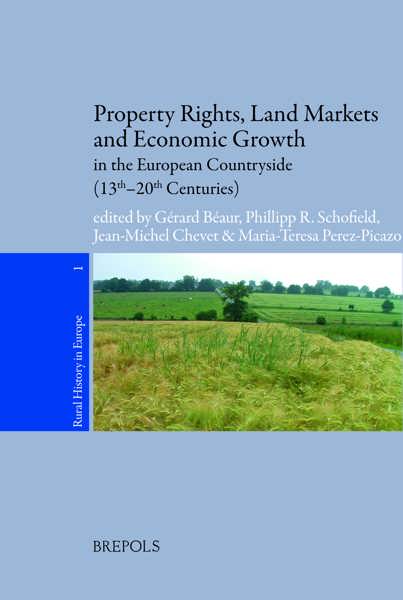
Integrated Peasant Economy in Central and Eastern Europe
A Comparative Approach
Aleksander Panjek (ed)
- Pages: 264 p.
- Size:156 x 234 mm
- Illustrations:30 tables b/w., 5 maps b/w
- Language(s):English
- Publication Year:2024
- € 79,00 EXCL. VAT RETAIL PRICE
- ISBN: 978-2-503-59004-2
- Paperback
- Available
- € 79,00 EXCL. VAT RETAIL PRICE
- ISBN: 978-2-503-59005-9
- E-book
- Available
The book tests the “integrated peasant economy” concept with case studies on Poland, the Czech Republic, Slovenia, Serbia, Bosnia and Herzegovina and Ukraine.
Aleksander Panjek is professor of history at the Faculty of Humanities, University of Primorska (Slovenia) and a committee member of the International Society for Alpine History (Switzerland). His main fields of research are early modern economic and social history with a focus on peasant economy, rural society and cultural landscape. He is author and (co)editor of several books, e.g. Panjek, Mocarelli, Larsson eds., Integrated peasant economy in a comparative perspective. The Alps, Scandinavia and Beyond, 2017.
Income integration based on the peasants’ engagement in non-agrarian sectors is a prominent and widespread feature in the history of the European countryside. While listing a multitude of activities outside the narrow scope of farm management aimed at self-consumption, prevailing interpretations emphasize how survival was the goal of peasant economies and societies. The “integrated peasant economy” is a new concept that considers the peasant economy as a comprehensive system of agrarian and non-agrarian activities, disclosing how peasants demonstrate agency, aspirations and the ability to proactively change and improve their economic and social condition. After having been successfully applied to the Alpine and Scandinavian areas, the book tests this innovative concept through a range of case studies on central and eastern European regions comprising Poland, the Czech Republic, Slovenia, Serbia, Bosnia and Herzegovina and Ukraine. By enhancing our knowledge on central and eastern Europe and questioning the assumption that these regions were “different”, it helps overcome interpretive simplifications and common places, as well as the underrepresentation of the “eastern half” of Europe in scholarly literature on rural history. That’s why the book represents a refreshing methodological contribution and a new insight into European rural history.
Results of a comparative approach
Aleksander Panjek
Concepts of Income Integration and the Integrated Peasant Economy: Western and Eastern Europe Reconsidered
Aleksander Panjek
Nonagricultural Sources of Polish Peasants’ Income from the Perspective of Sixteenth-Century Nobility
Piotr Guzowski and Radosław Poniat
Rural Non-Agricultural Activities in South Bohemia During the Second Half of the Seventeenth and in the Eighteenth Century
Josef Grulich
At the Roots of the Integrated Peasant Economy Concept: Early Modern Western and Central Slovenia
Ines Beguš and Aleksander Panjek
Diversity of the Peasant Economy in Medieval Serbia (Thirteenth to Fifteenth Century)
Miloš Ivanović
The Autarky of Peasantry in Ottoman Bosnia (1463-1878), Between Myth and Reality
Philippe Gelez
Peasant Agency in Off-Farm Incomes: A Case Study on the Ukrainian Provinces of the Late Russian Empire
Volodymyr Kulikov
‘Those who had paid jobs and worked on farms were living the best lives’: Integrated peasant economy in socialist Slovenia
Lev Centrih and Polona Sitar




